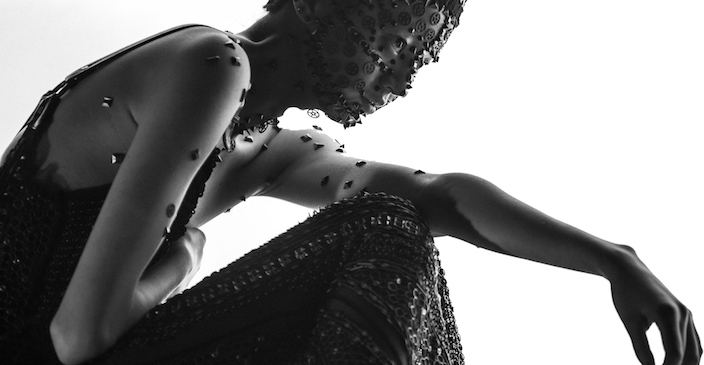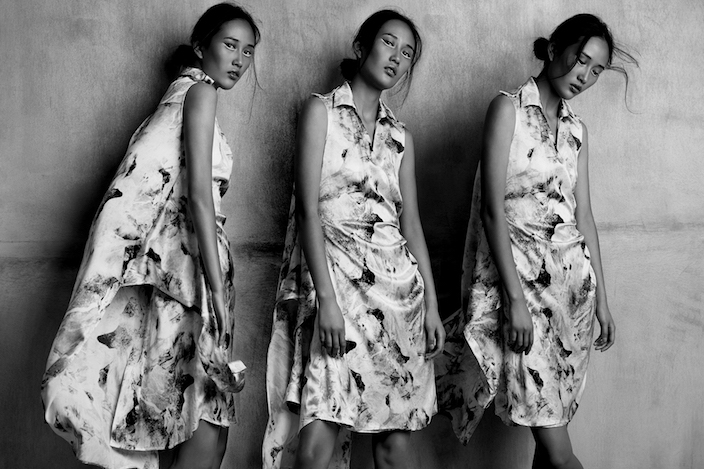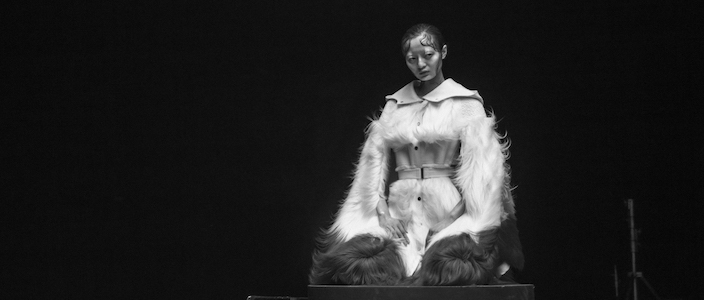"Paris is where fashion dreams are made. It's where the best buyers from all over the world go to place orders. Any international expansion, for any brand, starts here.”
Jasmine Ting can’t hide her excitement. The founder and managing director of Shanghai-based fashion brand Arete Studio has a lot to be happy about. Her label, which launched in Shanghai in 2013 and quickly made a name among local fashion-savvies for its sharp, versatile looks and broody aesthetics, is going to the French capital this month. It’s one of a few selected brands to show at Paris Fashion Week’s AMF Paris Showroom, a fashion platform for new luxury fashion designers from around the world.
And that’s not all. In December, the acclaimed French festival A Shaded View on Fashion Film (ASVOFF) chose Arete’s 2015 film collaboration with Hong Kong director Wing Shya to represent China. Couturier Jean Paul Gaultier – an icon most fashion designers couldn’t fathom even showing their work to – presided over the jury at the event, which was held at the Centre Pompidou. Arete’s feature made it to the finals and was nominated for best costume design, best art direction and best director at the International Fashion Film Awards.
The film is a slow-motion visual symphony of the fashion house’s craftsmanship and aesthetics. The critical acclaim it has received in industry circles equates to being promoted to fashion’s world stage.
 “We’ve always had an international mindset for Arete,” says head designer Christina Liao. “Our latest collection – the one we’re showing in Europe – is for the woman who’s comfortable whether she’s in Shanghai, New York or Paris. I don’t want to design just for an individual demographic; the collection should be identifiable to any international audience.”
“We’ve always had an international mindset for Arete,” says head designer Christina Liao. “Our latest collection – the one we’re showing in Europe – is for the woman who’s comfortable whether she’s in Shanghai, New York or Paris. I don’t want to design just for an individual demographic; the collection should be identifiable to any international audience.”
Ting agrees: “We want to introduce a contemporary style that moves away from the traditional ‘East’ and ‘West’ dichotomy.”
They aren’t the only ones.
A number of China-born designers who have been educated (or are based) in the West have been gracing the catwalks of international fashion weeks for some time now. Masha Ma, Uma Wang, Xander Zhou, Haizhen Wang and others are helping shift the way that Chinese design and fashion are perceived internationally.
But, increasingly, domestic talents who have only cut their teeth in China are also turning West – whether through invitation or other means – to show their collections.
"Expanding to Paris proves that incredible design originates from China and that we are in sync with the international fashion calendar"
China Academy of Art graduate Min Wu is a case in point. The designer – who’s highly revered among the upper echelons of China’s fashion world – had her official debut at London Fashion Week in September 2015, where she returned this season with a well received fall/winter line.
In Milan last month, the women’s edition of the trade fair White Milano carved out an area dedicated to freshly scouted design talent from China. Fashion curator Sonja Long Xiao, founder of the Shanghai concept store Alter, was invited to showcase some of the rising stars in Chinese luxury design who are still unknown to the West. The result, called ‘China Calling,’ offered attendees the chance to view collections from the likes of Chrisou by Dan, Shushu/Tong, Nicole Zhang, Chen Yi Yuan, YVMIN, C.J. Yao, Rolling Acid and more – all up-and-coming creatives from the Mainland.
Even Guo Pei – known by millions in the East yet unheard-of in the West until Rihanna wore one of her gowns to the Met Gala in New York last May – made her debut in Paris in January, when she showed her designs during Haute Couture Week.
The East is looking West, and shaping its aesthetics accordingly, targeting customers and marketing goals in new and interesting ways. It’s a sign that the industry, both locally and internationally, is maturing. Brands are aiming to expand and reach new shores, moving beyond the confines set by borders, heritage and – in the case of Chinese fashion – the notion of exoticism. The fact that more Chinese designers are doing so is healthy – although finding a balance between creativity and market expectations might prove challenging for some.
 Having a coherent strategy, position and product range, as well as a way of communicating them in and outside China, is what’s needed to succeed in the long run. China’s biggest e-commerce company (in terms of direct sales to consumers), JD.com is, surprisingly, one fashion player aware of this.
Having a coherent strategy, position and product range, as well as a way of communicating them in and outside China, is what’s needed to succeed in the long run. China’s biggest e-commerce company (in terms of direct sales to consumers), JD.com is, surprisingly, one fashion player aware of this.
The online shopping platform held a fashion show at New York Fashion Week in February – its second after last year’s runway debut at Milan Fashion Week. It was a calculated move to promote emerging Chinese designers, including Alicia Lee, Ruiping Guo, Chi Zhang and Gioia Pan, and as Marc Bain at Quartz pointed out: for the site to market itself to both Chinese and foreign consumers.
The show was seen by many fashion commentators as a move to raise JD.com’s credentials as the go-to platform for US designers entering China’s e-commerce market, but also as a way to lure more Chinese luxury consumers to the site.
Appearances at global fashion events seem to help drive greater desirability for a label (or in JD.com’s case, a retailer) in Chinese mainland, where brands with long established credibility in the West tend to prosper.
JD.com’s previous Milan show, in September 2015, also hoped to attract the attention of China’s online fashion shoppers by showcasing the looks of four Chinese designers it stocks: Lin Gu, Ali Tan, Xiaoyan Xu and Ivy Hu. In August 2015, it partnered with the Europe Design Center to create a competitive fashion program for emerging Chinese designers – again, another trick to boost interest from both China and the West.
 At a time when the country still lacks a strong wholesale system, binary strategies (showing collections abroad as a way of upping visibility) – are the best way for up-and-coming designers to get noticed, says Ting at Arete.
At a time when the country still lacks a strong wholesale system, binary strategies (showing collections abroad as a way of upping visibility) – are the best way for up-and-coming designers to get noticed, says Ting at Arete.
“Traditionally, ready-to-wear fashion labels around the world rely heavily on wholesale as the first step in building the business,” she explains. “But for now, China isn’t quite there. Also, time-wise, it lags far behind New York, Milan, London, and Paris. That’s why my team and I work extra hard to ensure our entire business is in sync with the West. We hope that expanding to Paris not only proves that incredible design originates from China, but also, from a business perspective, that operationally we are in sync with the international fashion calendar.”






















0 User Comments